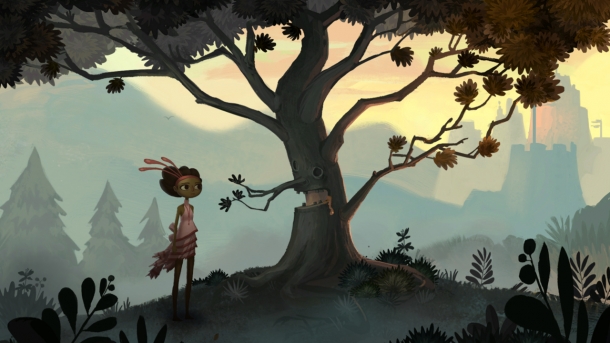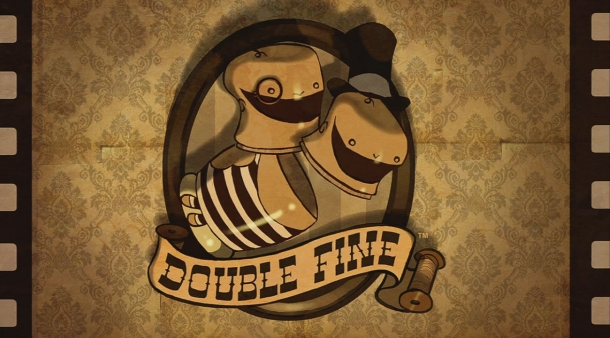Conception
On Feburary 8, 2012, Double Fine Adventure was initiated as a Kickstarter after Double Fine's Tim Schafer was interviewed for 2 Player Productions' upcoming Kickstarter-funded documentary on the game Minecraft. After the interview, Schafer and 2 Player Productions discussed the filming of a documentary about Double Fine's future project.
After 2 Player Productions finished the documentary on Minecraft, the two studios began to work out the specifics of the documentary/game project. Schafer soon realized that publisher interference would make an "honest portrayal of game development" impossible. Double Fine lacked the resources to self-fund a game and 2 Player lacked the ability to fund the film. The two companies decided that a project on Kickstarter was the best way to go about funding the project, with the new game initially considered "kind of as a sidenote" by Schafer to accommodate the documentary filming.
Game Selection
The genre of adventure game, a genre that had long been stigmatized as commercially niche, was selected to offer the public a product that would not have existed without their support. In Schafer's pitch to the public, he argued that publisher funding for the project would be very difficult to come by, stating "If I were to go to a publisher right now and pitch an adventure game, they'd laugh in my face."
In interviews made prior to the Kickstarter, both Schafer and Ron Gilbert agreed that the resulting game would likely use 2D computer graphics instead of 3D in order to keep the "old school" nature of adventure games, but allow Double Fine to tap into the painting talents of their in-house artist, Nathan Stapley.
Kickstarter
The Kickstarter drive was launched in early February 2012 with the idea that Schafer would be able to talk about it during the 2012 Game Developers Conference in early March.
Double Fine set the goal for the project at $400,000, with $100,000 allocated to the film production and $300,000 for the game and marked the largest goal for any gaming project on Kickstarter, to date. It was marked the lowest budget project for the company with even the download games recently costing approx. $2 million.
Various incentives were given to those that pledged $15 or more, including:
- The game
- Early beta access
- Access to private community areas to discuss the game
- Prints
- Invitations to meet with the Double Fine staff
Further rewards were added through a second update two weeks into the effort, including:
- Digital Soundtracks
- Physical copies of the game and documentary
- An art book
In launching the Kickstarter project, Double Fine claimed it was the first major studio to use the model for the funding for a game.
Within 9 hours of its start, the Kickstarter project exceeded the $400,000 goal and within 24 hours it had surpassed $1 million. By the time the funds had reached $1.35 million, Schafer noted that the total had already exceeded the budget for Day of the Tentacle ($600,000) and was nearing the budget for Full Throttle ($1.5 million).
Kickstarter stated the next day that it was the most successful Kickstarter to date, having attracted more backers than any prior effort in the site's history. On Feburary 20, 2012, the project passed the $2 million mark and was later closed on March 13 with more than $3.3 million from over 87,000 backers, making its budget nearly the same as Costume Quest and Stacking.


